Worthing’s Beach Hotel
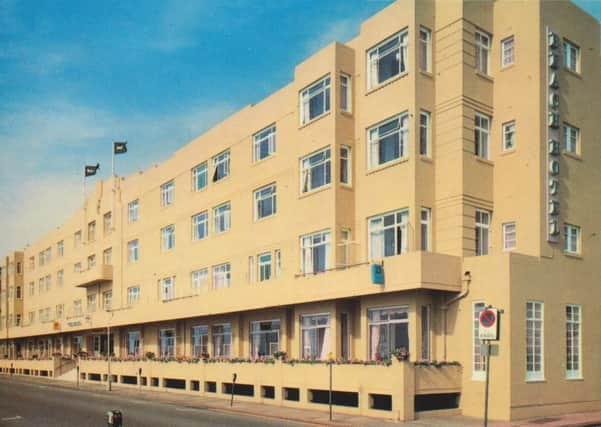

The Beach Hotel opened in one of the Heene Parade houses – No. 4 – in 1914.
Within 20 years the Beach had acquired the whole terrace, which was transformed in 1935–6 into a 94-bedroom art deco hotel.
The original Victorian terrace was completely encased.
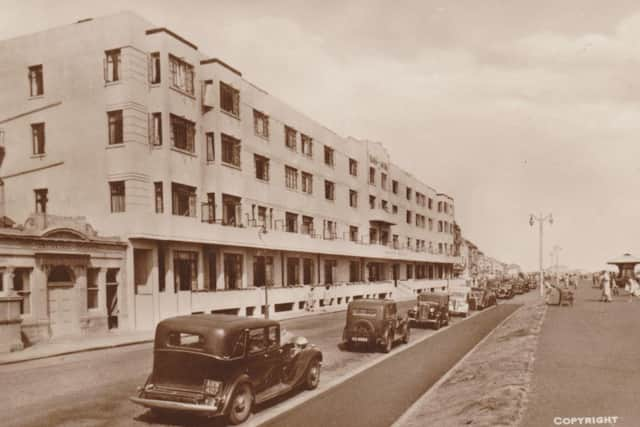

Advertisement
Hide AdAdvertisement
Hide AdFurther changes and improvements took place over the years. As late as 1969 only six of the bedrooms had integral bathrooms, but by 1972 this had risen to 76.
For three-quarters of a century, the Beach was one of Worthing’s leading hotels, receiving, for example, a complimentary review in 2004 from Paddy Burt, the Daily Telegraph’s hotel reviewer for 18 years.
She described the Beach as “a grand seaside hotel that’s not in the least bit grandiose”, adding that its balconies “suggested sunny summer afternoons of long ago”.
“There’s a tendency nowadays,” Burt concluded, “for old-fashioned hotels to be ‘modernised’. If this happened to the Beach Hotel, it would be ruined.”
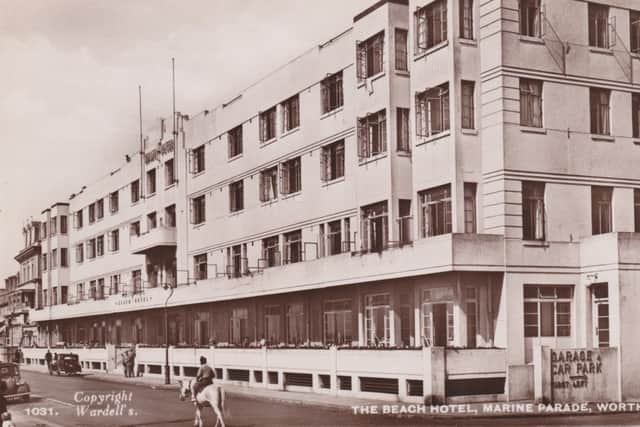

Advertisement
Hide AdAdvertisement
Hide AdThis risk was averted when the hotel was demolished in 2012.
Past and present
Although it is easy for those that immerse themselves in the history of a town to favour past over future, even those with a historical perspective have to accept that no town can be preserved in aspic.
Nonetheless many – perhaps most – of the fine buildings that have been lost to Worthing over the past 75 years could have been saved if more sensitive and imaginative decisions had been taken.
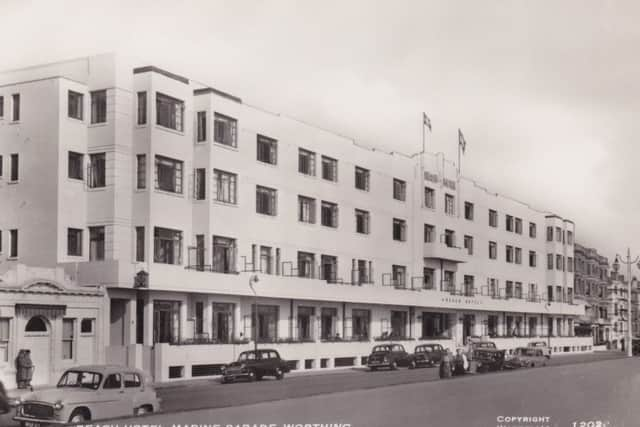

A few buildings, however, had perhaps come to the end of their useful lives – and this probably applied in the case of the Beach Hotel.
Advertisement
Hide AdAdvertisement
Hide AdSoon before the Beach closed in 2012, we visited the hotel and had a friendly and informative chat with Linda Martin, joint manager of the hotel with her brother (and both of them members of the Farnes family, which had owned the hotel from very early in its existence).
Linda – who helpfully provided me with documentary material from which some of the information in this article derives – told us that the hotel had reached the point where it simply could not be upgraded to 21st century requirements.
As we have seen, the Beach was converted from a relatively modest terrace built 150 years ago.
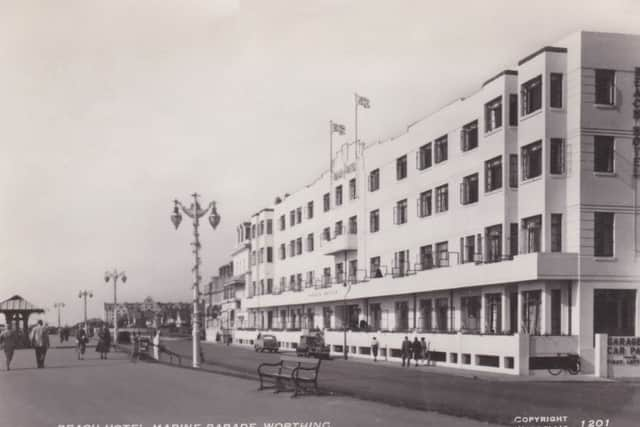

There is a limit to how much structural change can be accomplished within the fabric of an old building, and over the years the Beach had already been knocked about a great deal.
Replacing the Beach
Advertisement
Hide AdAdvertisement
Hide AdThe report by New Historic Environment Consulting that helped condemn the Beach Hotel to destruction said that it was a building “of modest quality and a clear departure from surrounding fabric in terms of both style and quality”.
The hotel had little “relationship with its 19th-century neighbours”, and its “horizontal emphasis” was “somewhat overbearing”.
It is difficult to disagree with these judgements. The 1935–6 makeover of Heene Parade had, in truth, resulted in a structure that looked rather heavy and ungainly.
Nonetheless, like most of the people of Worthing, I had great affection for the Beach Hotel, and was very sad to see it go.
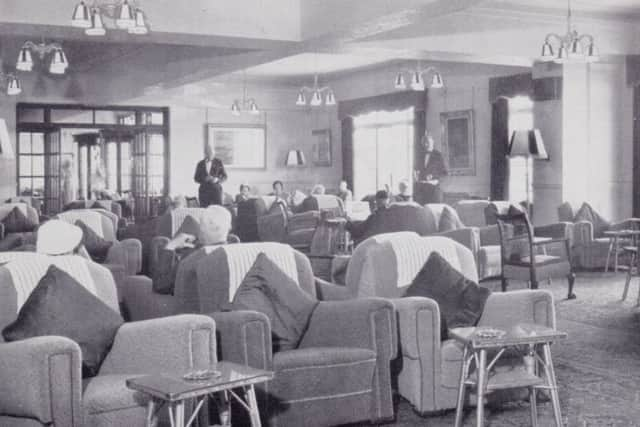

Advertisement
Hide AdAdvertisement
Hide AdWhen a large building in such an important position is replaced, it is vital that great care and sensitivity be applied to considering what should replace it.
The kindest thing that can be said about the new Premier Inn and Beach Residences is that it is an opportunity wasted.
A less kind judgement is that it is a wholly inappropriate building that dominates in a most unbecoming way not only the western end of Worthing seafront but also, more specifically, its luckless immediate neighbour, the Burlington.
The new building is too bulky, and it has no sense of the context in which it stands.
Advertisement
Hide AdAdvertisement
Hide AdIf its predecessor had little “relationship with its nineteenth-century neighbours” and was “a clear departure from surrounding fabric”, the same applies even more comprehensively to the replacement.
The Premier Inn and Beach Residences is not the ugliest building on Worthing seafront – the field is a crowded one – but it is one of the most alien.
It looks as if it got lost on its way to its intended location in Croydon or Basingstoke.
The blogger Wolfie Wolfgang describes it as “bland” and “sleekly corporate”, although he discerns “a hint of deco homage” in the “the squat tower in the middle”.
I think he is being kind.
Advertisement
Hide AdAdvertisement
Hide AdThe tower looks like part of a 1970s hospital, and the “penthouse” section at the top of the Beach Residences has a cheap and untidy appearance.
In a different context the building might be acceptable. The problem is its total disregard for its surroundings.
It is a great pity that the opportunity was lost to put a genuine “landmark” building on this prominent and sensitive site just to the east of Heene Terrace.
Go to Bognor and take a look at the magnificent Esplanade Grande building with which Roffey has graced the seafront there. It takes your breath away.
Advertisement
Hide AdAdvertisement
Hide AdWhy could Roffey not have rewarded its home town of Worthing with something of comparable quality, at the very gateway to Marine Parade?
Roffey in Worthing
The ill-conceived Premier Inn and Beach Residences building is all the sadder because over the years Roffey has erected a number of fine buildings in Worthing, in a variety of styles.
Let us briefly remind ourselves of the firm’s other seafront buildings, from west to east.
At the far end of the seafront stands Roberts Marine Mansions, a building that is attractive and harmonious, if perhaps not very idiomatic.
Advertisement
Hide AdAdvertisement
Hide AdVista Mare, the small thirties-style apartment block recently built just to the east of Marine Gardens, is a delight – charming, ingenious, and characterful.
In the case of Warnes, to the east of Steyne Gardens, the jury is perhaps still out.
When I was passing the block a few years ago, I remarked to my companion, “That building’s not totally without merit.”
A man of about 40, overtaking us at speed, said – without breaking step or turning round – “You’re quite wrong. It’s absolutely ghastly. It looks as if it belongs in Las Vegas.”
Advertisement
Hide AdAdvertisement
Hide AdThe truth probably lies somewhere in between. Though not to all tastes, Warnes has a certain presence and dignity.
To the east of Warnes stands the jewel in Roffey’s Worthing crown, the pitch-perfect Eardley – designed in close imitation of the 19th-century terrace it replaced, and the deserved winner of a couple of prestigious architectural awards.
The Nautilus
The Eardley is surely the most handsome building to have been erected in Worthing for over a century – its only close rival for this title being the Nautilus block, to the east of Travelodge and West Buildings.
Having written the above sentence, I wanted to double-check that the Nautilus was not Roffey’s work (it isn’t) – and I happened upon a recently created Nautilus website, which included this: “The Worthing Herald described the building as ‘a textbook example of how a fine modern building designed in a harmonious, traditional style can enhance an old seafront’.”
I couldn’t have put it better myself.
Advertisement
Hide AdAdvertisement
Hide AdIndeed I liked this quotation so much that I thought I would use it here to suggest an approach that Roffey might happily take on board.
Then a small bell rang in my head. The quotation in question came from my article about the Thomas Banting Memorial Home (Looking Back, April 9)!
I then noticed that much of the other historical information on the Nautilus website came, without attribution, from that article – as did several of the pictures.
A letter from my lawyer is in the post.
Cultural change
Obviously people’s responses to buildings are a matter of taste – but, when there is something approaching negative consensus, it is clear that something has gone wrong.
Advertisement
Hide AdAdvertisement
Hide AdI have not heard a single person in Worthing speak well of the Premier Inn and Beach Residences building (although I dare say the letters page of the Herald & Gazette will now be offered exceptions to prove the rule).
More generally, it is difficult not to sense a sea-change in the culture at Roffey – and one that is much to Worthing’s disadvantage.
Put simply, it would appear that where once the Roffey profit motive and the needs of Worthing rode in tandem, now the profit motive rides on a bicycle built for one.
With the exception of Vista Mare, Roffey’s recent and proposed activity on the seafront is too dense, too tall, and – as far as the taste of most Worthingers is concerned – too unambiguously and unrelievedly modern.
Advertisement
Hide AdAdvertisement
Hide AdRoffey’s proposal for an 11-storey block at the southern end of Grand Avenue has for the moment been rejected, but presumably the firm will soon be back with another over-large offering that will generate great dismay in the town.
Meanwhile Roffey’s proposal for a 21-storey skyscraper on the old Aquarena site rumbles on.
I imagine that, in the latter case, Roffey would claim that the price of the land – over £5 million – obliged them to propose a very large building.
But no-one forced Roffey to buy the site.
If the Aquarena land was too expensive to support a building of a height and bulk appropriate to its location, then Roffey could have walked away and let someone else take the flak.
A new brutalism
Advertisement
Hide AdAdvertisement
Hide AdThe firm no longer seems interested in accommodating its seafront buildings to existing styles or to the context in which they will stand.
Britain’s seafronts are a much-loved component of her vernacular architecture – and pastiche or not – buildings such as the Eardley and Vista Mare have greatly enhanced Marine Parade.
However, the design of the Premier Inn and Beach Residences, and of the buildings proposed for the Grand Avenue and Aquarena sites, suggests that Roffey has now adopted as its default style what might be described as a new brutalism.
What the firm imposes on Worthing seafront will last for many generations – long after the profit that has been made on the buildings has turned to ashes.
Advertisement
Hide AdAdvertisement
Hide AdUntil even as recently as three or four years ago, Roffey was almost universally seen in Worthing as a presence for good. The firm was greatly respected. It contributed much to the regeneration of Worthing. All its buildings had merit; some were outstanding. Roffey was an ally, working in harmony with the town.
Now the people of Worthing increasingly see Roffey as arrogant and high-handed. It is a sad and unnecessary change.
What shall it profit a man – as the great Nazarene pointed out – if he shall gain the whole world and lose his own soul?